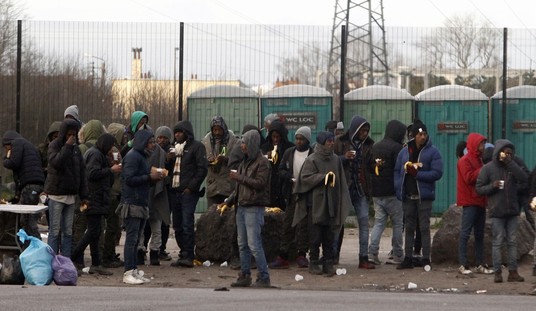A key executive policy intervention on refugee processing will end today, the Wall Street Journal reports, with the White House’s blessing. The US will once again process refugee requests from all countries after having suspended all processing more than four months ago over security concerns. New procedures have been put in place to verify the information proffered by applications, and stricter controls will now be applied to requests from eleven countries:
The Trump administration will allow refugee admissions to the U.S. to resume for all countries but with new rules meant to better vet applicants, administration officials and others familiar with the planning said.
The White House plans to announce the resumption of admissions and at least some of the new rules on Tuesday, officials said. Refugee admissions had generally been halted in June, with some exceptions.
Under the new rules, the administration will collect more biographical data, such as names of family members and places of employment, officials said. The administration will also do more to mine social media posts to see, for instance, if refugees’ public pronouncements are consistent with the stories they offer in their applications, the officials said. ….
Under the new order being issued, refugee admissions will resume for all countries. However, one person familiar with the planning said that people from 11 targeted countries will be subject to additional vetting that will slow down the process for them.
This decision does not directly impact the so-called “travel ban” on eight countries, which got blocked this week by the same federal judge in Hawaii that enjoined the administration on earlier versions. The refugee suspension was imposed across the entire system, although some spot exceptions have been made, as the WSJ notes. In practice, that meant mainly blocking refugee applications from north Africa and Asia Minor, where the flood of refugees originates that mainly got absorbed by Europe. Our allies there wanted the US to partner with them on resettlement, a desire that has grown more urgent as the immigration issue has angered voters and threatened the center-left coalitions that have long dominated the continent.
Still, this might make sustaining the travel ban on visas harder, in court and perhaps politically. Now that the Trump administration has solved their apparent dissatisfaction on refugee applications with new processes and rules, courts will likely wonder, why not apply those lessons to visa processing? In this case, the narrowness of the “ban” will help, and so will the nuanced approach it takes to various types of visa applications, making it a more rational approach to legitimate security concerns. The issue for the visa-processing suspension in those eight countries is the cooperation from the countries themselves more than the applicants.
That won’t end the controversy over refugee policy, however. A month ago, the administration set the bar for admissions to its lowest level in years:
In the meantime, on Sept. 29, the White House announced that Trump had set the refugee admissions ceiling at 45,000 for Fiscal Year 2018, which began on Oct. 1 — the lowest cap since the refugee admissions program began in 1975.
Last year, 84,994 refugees were admitted to into the U.S. Around 22,000 of them were from Syria and Iraq. In 2015, nearly 70,000 refugees were admitted. …
A spokesperson for the United States Citizenship and Immigration Services said in September that the “growing” domestic asylum backlog is expected to reach 300,000 cases by the year’s end. Asylum seekers come to the U.S. and file for asylum from persecution overseas, as opposed to refugees also fleeing persecution who undergo an extensive screening process abroad and are then resettled in the U.S.
U.S. officials have defended the lower refugee admissions cap by citing that backlog, the reassignment of refugee officers and what they say will be tougher vetting procedures that mean applications will take more time to process.
The new level is not that far from the traditional 50,000-refugee annual limit that existed before 2014, when Barack Obama began raising it in response to the crisis in Libya and Syria. That still won’t please our allies, and is likely to become an issue for the new ambassador to the Holy See. Callista Gingrich will travel to her new posting after taking the oath of office from Donald Trump today, and will soon coordinate with a Pope that has made refugees a central issue in his pontificate. It likely won’t go any easier for envoys to our allies in Europe, either. But at least this will likely remain outside of the courts for the rest of Trump’s term in office.








Join the conversation as a VIP Member